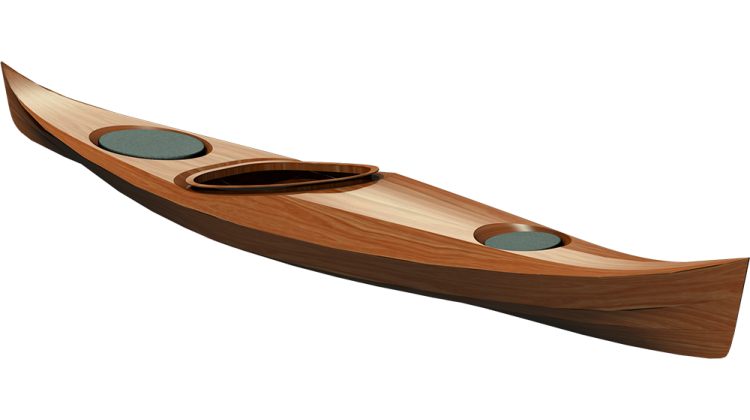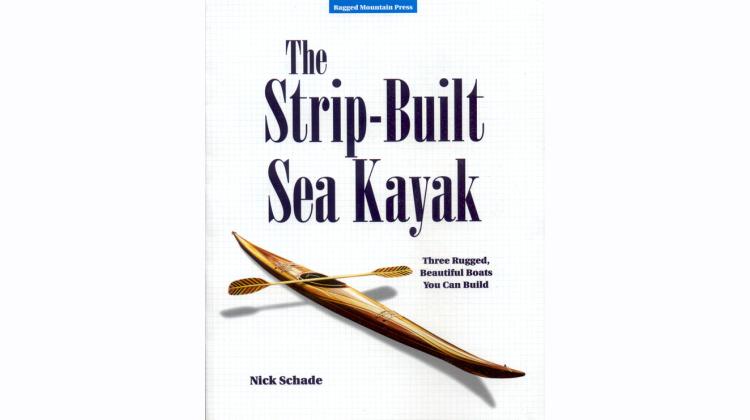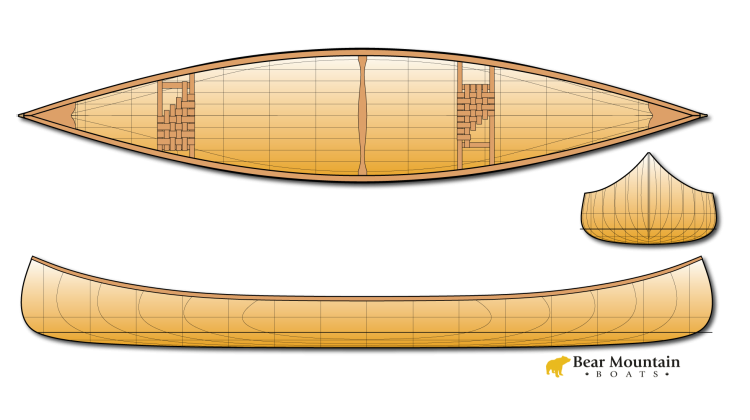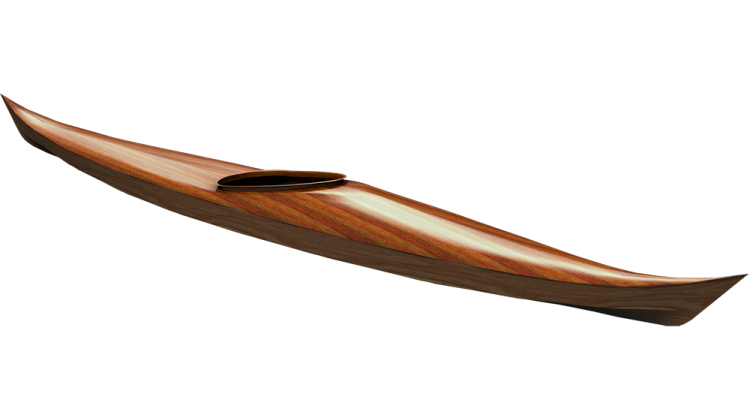Navigating Mistakes in the Workshop
Applying a Fill Coat:
Nick and Bill discuss the importance of applying a fill coat to the interior of the kayak to ensure there are no pinholes that could lead to humidity issues over time. They also explain the need for varnishing the interior for UV protection, despite it being on the inside.
Trimming Excess Fiberglass:
The focus shifts to trimming the excess fiberglass around the edges to prepare for varnishing. The Nick and Bill demonstrate how to use a utility knife efficiently and address any bubbles or imperfections in the fiberglass by shaving them off flush to the surface.
Preparing for Varnishing:
They emphasize the importance of preparing the surface for varnishing, explaining the process of applying a thin coat of epoxy to fill the weave of the fabric. The discussion includes the use of accelerant to speed up the bonding process.
Assembling Puzzle Joints on Side Panels:
Moving on to assembling the side panels, the hosts discuss the puzzle joints designed to resemble a wave or flame. They encounter an issue with the joints not fitting perfectly and decide to take the assembly apart for adjustments.
Dealing with Mistakes:
Nick and Bill stress the value of learning to deal with mistakes in the boat-building process. They share insights into the necessity of sometimes taking drastic measures to fix issues, demonstrating the use of debonder to disassemble glued parts.
Cleaning and Reassembling:
After disassembling the joint, they clean up the edges and reassemble the puzzle joint, showcasing the importance of being somewhat aggressive to achieve the desired results. The hosts share insights into the mindset needed to effectively fix mistakes and avoid pecking away at problems.
Completing the Side Panel Assembly:
The hosts successfully reassemble the side panels, ensuring a smoother curve and a better fit. They discuss the aesthetic design of the puzzle joints and emphasize the importance of being willing to take more drastic measures when needed.
Conclusion and Preview:
The episode concludes with a summary of the day's progress and a preview of the next installment, where they plan to finish up the deck by assembling hatch recesses. Viewers are encouraged to subscribe, like, and support the project through Patreon, and the hosts express their desire to see more people engaging in boat-building projects.
Welcome to The Guillemot Kayaks Workshop. Bill and I are working on the Petrel play kit from Chesapeake Light Craft. This is a 14t 23in wide transitional recreational to sea kayak. It's a lot of fun to paddle, and this is a stitch and glue kit. In this episode, we are going to work on the deck. In the last episode, we did fillets on the inside of the hull glass. Today, we will do a little bit more on the hull and then put that aside to start working on the deck.
Yesterday afternoon, we finished up fiberglassing this, and I would like to get a little bit of a fill coat into the interior of this to make sure there are no pinholes going into the wood that humidity could migrate into over time. Also, I eventually want to varnish the interior for UV protection. You might think, "Okay, it's the inside, who cares about UV?" But over time, some sunlight can get in through the hatches or the cockpit, potentially breaking down the epoxy. So, getting some varnish on there protects it a little bit more.
If I want to varnish this, I need to sand before varnishing. However, if I sand right now with the small amount of epoxy over the fiberglass, we would sand immediately into the fiberglass, potentially weakening the boat. So, what we want to do on the inside of the boat is get that fill coat. Let's first trim off the excess fiberglass around the edge. We can trim right down flush to the wood. If we take off a little bit of wood in that trimming, it's okay.
A couple of things about trimming: sometimes, I feel the need to instruct people on how to use a utility knife. You don't need to saw at it. If you've got a sharp knife, just hold it up right against the edge of the wood and drag the knife through it for a nice clean cut. If you're sawing, you'll probably create a more ragged edge, which we don't want. Let's trim off the excess fiberglass.
At the very end, you have to go from the outside a little bit, and this is why you didn't want to get the glass over the edge. We have a bevel on the top edge of these panels, and we didn't want to get glass onto that bevel because it's going to come off anyway. It's common, although not desirable, to have a little bubble near the top edge. We'll trim it off flush, and when we put tape on it, it will go right over it.
So, any little drip or bubble near the edge, just shave it off as flush to the surface as you can. Now, let's put a little bit of epoxy on the inside to start filling the weave. The fabric here has an over-under weave, and in between those, there are pits. We want to get enough epoxy in to start filling those pits, preparing it for varnishing later. We won't necessarily give it a heavy sanding, but we'll take a scotchbrite to get rid of the glossy bit.
Mix up some epoxy in the cup. It doesn't need to be a big batch. Half inch to 3/4 of an inch is enough. Wear gloves and apply a thin coat of epoxy over everything. The goal is to fill in the weave a bit, not eliminating it but providing some tooth for the varnish to bond to. The varnish serves a protective function, preventing the epoxy from oxidizing and offering a bit more coverage.
How much does that weigh? Very little. Under five lbs, I would say. It doesn't weigh much. Now, we have drawings showing how the deck will go together. We have the side panels with puzzle joints, the front deck, the foredeck, the back deck, and the cockpit recess. Let's start laying those pieces out and identify them. We need to assemble these puzzle joints with the inside out.
So let's see, that one goes to that one. Get all the bevel sides matching, and we'll assemble these. Remember the drill for assembling the puzzles, right? The idea here is to get this as flat as possible, put some drips on it, lock it tight, and then move along to get it flat again. We have this broken piece here, and I guess that would be the last part we would do. Let's see how it fits in there, just a look first. Yeah, just a dry fit in there. Can we assemble that? It fits pretty well like that. You think you can get that in after everything else is glued? I think I can, because it's on the outside. Alright, so let's do it that way. It might be more difficult if it were on the interior. Yeah, less likely to break on the interior, but get those all glued up, and then we'll fit in that broken bit.
So, you can really feel with your finger when it's nice and flush. Great. Make sure it's held in place before you move it. You know it's probably hardened now, but it won't be secure. Well, it might be because there's glue in between now. Oh, really? Yeah, you can give it a feel, see what it does, see what happens. Oh, yeah, it did lock up right. Be careful how fast you're moving. It's not instantaneous; it's just almost instantaneous. Takes a few seconds. So, I'm going to still spot-weld it on the outside. What I would do is get some glue on the broken joint and then maybe actually put a little bit of glue along the edge. Let's dry fit it, make sure we sort of have a sense of how that's going to go in, and then we'll put a little bit of glue on here. Actually, more than a little bit of glue and glue along there. Now, to make it bond in there quickly, I'm going to hose it down a little bit with the accelerant and go ahead and put that right in. Hold it pretty tight, yeah, and so that took care of that.
On the outside, there's a little bit of a crack here, hardly visible. Once that's all covered with fiberglass and epoxy, it will be strong as if it never happened. So those two panels on the Petrel play are the only panels on the deck that actually have puzzle joints. These are the only two we need to assemble. After we glued this together, we sighted down this edge here, and you notice a little bit of a whoopsy-daisy right here at this point. This curve comes in, and then there's a little knuckle in there, which should be a smooth, continuous curve. So, I think we're going to try and take this apart. This will be fun.
We have here a debonder for this super glue. I'm not sure what this contains, but it softens up the glue, and we should be able to take it apart. If you look at this joint, there are some fairly big gaps up in here, so the whole joint needs to rotate in a little bit more. It's not unusual to have some gaps in here. This one still has a bit of a gap there, but it's significantly smaller. Ideally, these will slide in perfectly tight, but sometimes it happens that you don't get them in. I think this panel will be fine, but this one, the gaps are big enough, and that little crook is visible enough that let's go ahead and try and take it apart. Alright, so this debonder, it says "uncare," we'll see what happens. Just soak all those glue joints. This will either work or it won't. It's got a pretty good friction fit to begin with, so it might make it a little okay; it's moving. Okay, so that was a bit of a process. I ended up with one little break here that I think we'll glue right back together again and won't be a problem.
One of the things about becoming good at any task of making stuff is really learning how to deal with your mistakes. It's not that you never make mistakes because you will always, but you get more and more strategies for dealing with a problem. So, your knowledge of what will and will not work becomes more rich with ideas. This is valuable, especially to make a video. To make some mistakes can show that we can recover from this. Yeah, part of it is becoming motivated to; you know, I can tell you to sight down the seam, and you don't really know what that means until this happens, and I didn't sight down the seam. When I do look down it, I see a concavity where it should be a nice smooth fair curve. My instruction to do that meant something you could see after the fact what the problem was. You can read the instructions; you can watch all the videos you want; you're still going to make mistakes. Some of the mistakes you look back at, you go back and read the manual or you go back and watch the video, and oh yeah, they said to do this, and that would have avoided the problem.
But that motivation and why it's happening, it's hard to get that all into the book or into the video until a mistake happens. Okay, here we deal with it. We're going to have to clean up this edge there, all that glue that was in there. We're going to have to clean off a little bit. I think these are nail files, which I never do my nails, but they come in handy for places where you need to reach in and clean something up. So, if we go ahead and get the messy glue out of there, be careful around this where the break happens. We don't want to sand away that surface where we're going to end up just gluing that piece back together. We could probably glue that piece back together right now, but get the globs in those joints out of there, and then we'll see if it fits back together and how tightly we can get it. Sight down that seam and see what it looks like. As we're doing this, we're trying to clean that flat edge in there, so we don't want to hold the sander at an angle and round over the edge. We want to just clean that face up. This might be a little bit of a trial. Stand a little bit; you don't want to go crazy on it and right open up the seam. And this we're to be careful with. Excellent. So, let's give it a test fit, see what see how it looks. You want to do this last, the chip? Yeah, oh, we're just doing the fitting now, right? We're just doing the fitting; it's a dry fit. See how far into that joint we can get it to go. You know, it sort of indicated it was a little too tight to begin with, so opening it up a little bit more than it was before is probably worthwhile. So what I did was I rather than start on the end where, yeah, I started on the other end, and it seems to be a little tighter that way. Oh, good. That will all go together. I don't know if I want to push it all the way together right now. Yeah, that'll work, I think. Take a look. Alright, yeah, that's a smoother curve there. I think we have to do this first because I don't think it's going to fit in there after.
Do you need to clean this piece up at all? Probably goobers on there. Okay, and so would you put accelerator on the other, yeah, glue on one side, accelerant on the other side, and stick them together? Well, you don't need a lot of this, right? Well, be a little bit generous, just to be sure it will stick and get up to the edges there, so those fuzzy edges are held down. Okay, all right, here we go. Probably going to glue my finger to it. Oh, yeah, yep, that's why you were wearing gloves. Glove in there, but all right, that'll come off eventually. Okay, that one goes in; this goes away. So there must be something holding that out. Don't worry about being a bit aggressive on that; you know, just to get it to do the job. This isn't a delicate flow, you know. If you see good fresh wood, that's probably a good sign. Okay, that's a good tip, yeah. So, I guess I'd start to be a little bit more, you know, yeah, let's go ahead and, and I'm going from the outside with the rasp. This tends to rip stuff off the edge, so if I start on the outside and stroke to the inside, it'll rip stuff off the inside but won't mar up the outside. This piece we glued back in isn't super tight up in there; I could be pushing it away a little crook, but I think that's just because they're coming together slope down. Slope down and so not, you know, once they're glued together, I think that'll be good.
One of the things I find in this kind of fixing stuff is your tendency is to try to do the least you can do. Sometimes you just need to go ahead and okay, we're going to clean this up right, very aggressive. Just, you know, get the nastiness out of there and, you know, and instead of trying where's the one piece that's in the way? We don't know. It'll take no time at all to just go over the whole thing a little bit more aggressively and then pop it, you know. And we often, in fixing mistakes, will default to trying to peck away at the problem, which in the long run, I think, is going to make it worse because as you pecked away at it, you were breaking little pieces off and causing more problems, you know. So, we try and get away with the least we can do, and, you know, you try that a couple of times. If you think, okay, it's just this one little thing. But okay, we've now tried it a bunch of times, and we're still not making progress. Let's just lean into this and really clean it up, and, you know, it might still need more work, but at least you've put some effort into it. It looks a lot better; it may not be perfect, but it looks a lot better. Okay, yeah, that looks nice. Good enough, yeah, good enough. And again, if you want to sort of knock things together with a little bit of gumption, sometimes that will help. It really was quite well held together, though, right? Yeah, you know, it doesn't look like you're doing much, but um, it just, those little spot welds actually do quite a bit. All right, there we go, a little into uncharted territory. Nice, all right, and now let's just take a look of what it looks like on the outside. This is what we're going to see, a little bit of glove left over. So, you know, I think that it's going to look fine. Nobody will know once those bits of gloves are gone, and structurally, the fiberglass and epoxy on the outside will take care of any strength issues there might be from those little broken bits.
Okay, so we've got the side panels assembled now. Now, we're ready to kind of assemble the deck proper. Okay, I'm going to end it right there for this episode. What we had here was we started to put the side panels together and ran into a little issue where the puzzle joint didn't fit together quite the way it was supposed to. One thing about the puzzle joint I designed for this boat is I wanted to make something that looks sort of like a wave or a flame, and as a consequence, it sort of rotates together instead of locking together in one given orientation. So, it's something you need to be a little bit aware of when you're putting it together. Some of my other puzzle joints are much more self-aligning, so we ended up with a little issue that, one way or another, you might end up having to deal with, and I hope it's a little bit informative for you to see the process of dealing with it. Like Bill and I were discussing, sometimes you just got to go ahead and take what seems like a drastic move and not try to sort of piecemeal or fix. Just go ahead, take the thing apart, scrape it down good, and try it again. While a more drastic process might seem a little scary, often it's quicker and easier to do, and the results will be better.
So, in the next episode, we will end up finishing up the deck, and it has some interesting pieces with the hatch recesses, which will take a little bit of time. So instead of making one really big long episode, I decided to split these two in half. In the next episode, we'll get to putting those hatch recesses together and hopefully finish up the deck. So if you're enjoying this series, please hit subscribe to let me know that you're watching it. Hit notifications so you get something from YouTube to tell you that the video came out. Hit like, and if you want to support me more in the production of these videos a little bit more directly, I have a Patreon site, and I really appreciate people helping me out through that. You will get early access to most of these videos. And in the long run, really what Chesapeake Light Craft and I want to see is you guys building more boats. While we would definitely like you to build our designs, building any boat is a good start. But if you're interested in the kit for this, it's available directly from Chesapeake Light Craft, or you can buy the plans from me at Guillemot-Kayaks.com. I've got a bunch of different designs for different kinds of kayaks. If this isn't exactly what you're looking for, I've got everything from sit-on-tops to racing boats. So until the next episode, thanks for watching and happy paddling.






